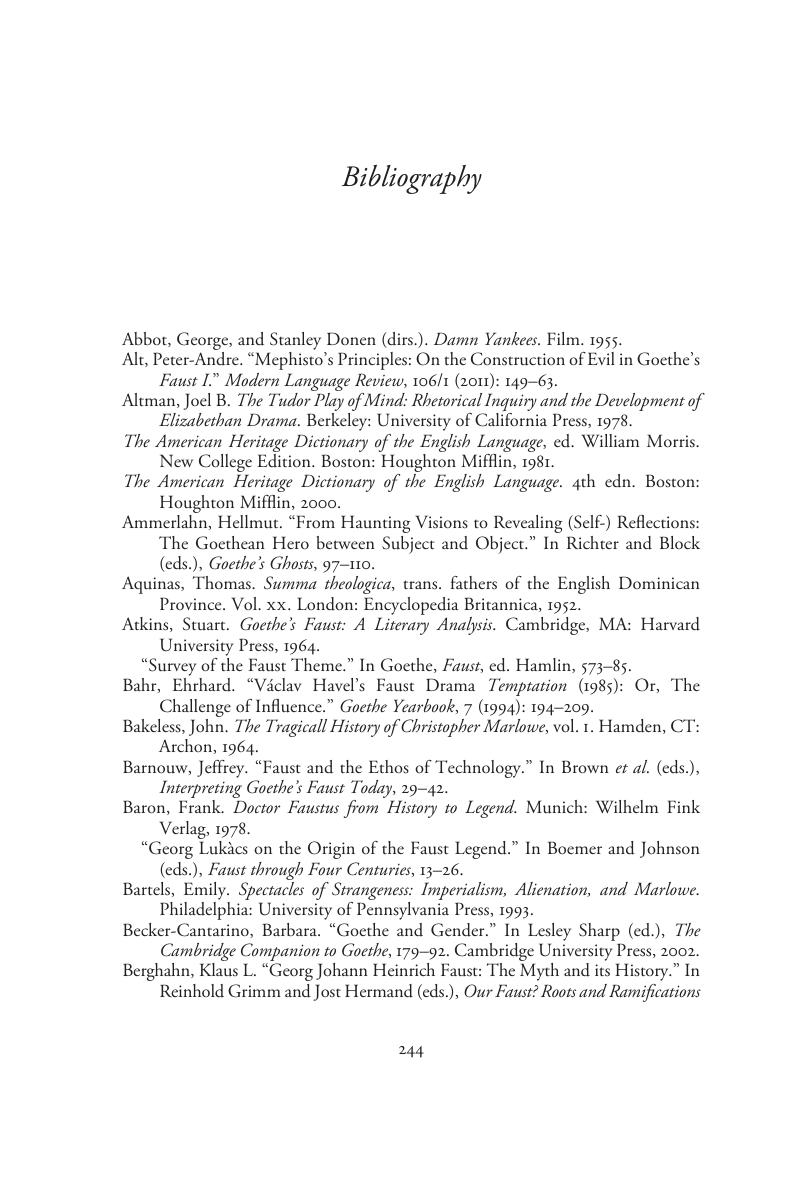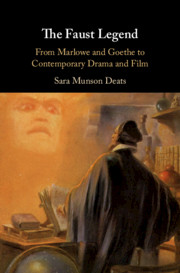Book contents
- The Faust Legend
- The Faust Legend
- Copyright page
- Dedication
- Contents
- Illustrations
- Acknowledgements
- Abbreviations
- Prologue
- Chapter 1 The Background of the Faust Legend
- Chapter 2 Marlowe’s Doctor Faustus
- Chapter 3 Goethe’s Faust
- Chapter 4 Post-Goethe Dramatic Versions of the Faust Legend
- Chapter 5 Cinematic Fausts
- Epilogue
- Notes
- Bibliography
- Index
- References
Bibliography
Published online by Cambridge University Press: 02 September 2019
- The Faust Legend
- The Faust Legend
- Copyright page
- Dedication
- Contents
- Illustrations
- Acknowledgements
- Abbreviations
- Prologue
- Chapter 1 The Background of the Faust Legend
- Chapter 2 Marlowe’s Doctor Faustus
- Chapter 3 Goethe’s Faust
- Chapter 4 Post-Goethe Dramatic Versions of the Faust Legend
- Chapter 5 Cinematic Fausts
- Epilogue
- Notes
- Bibliography
- Index
- References
Summary

- Type
- Chapter
- Information
- The Faust LegendFrom Marlowe and Goethe to Contemporary Drama and Film, pp. 244 - 256Publisher: Cambridge University PressPrint publication year: 2019

